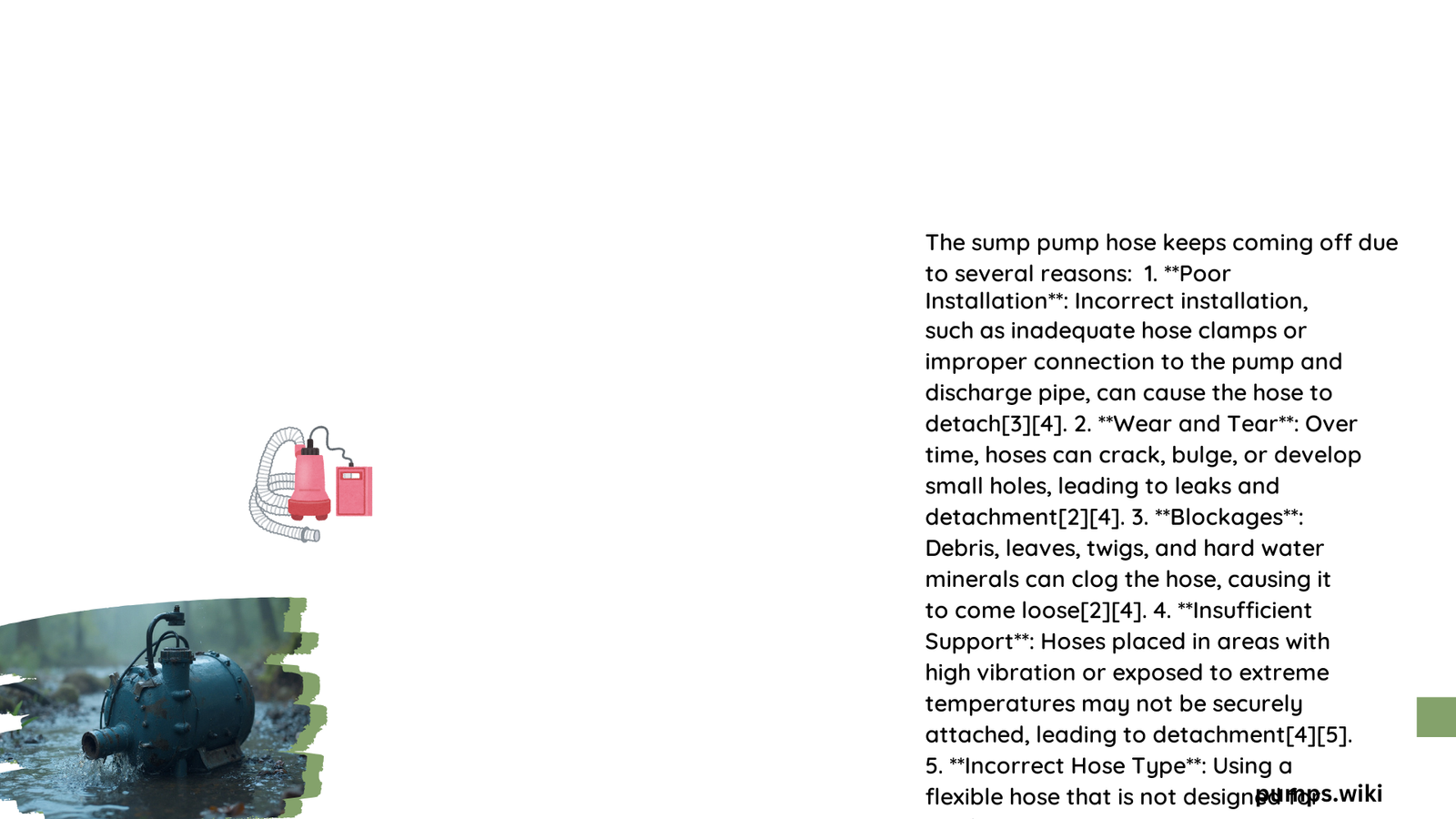Homeowners often encounter frustrating drainage issues when their sump pump hose repeatedly detaches, risking potential water damage and system inefficiency. Understanding the root causes of hose disconnection is crucial for maintaining a reliable basement waterproofing system. This comprehensive guide will explore precise diagnostic techniques, practical solutions, and preventative strategies to resolve sump pump hose attachment problems permanently.
What Causes Sump Pump Hose Detachment?
Why Do Hose Clamps Fail?
Sump pump hose detachment typically stems from several critical factors:
- Incorrect Clamp Sizing
- Mismatched clamp diameter
- Inadequate grip strength
-
Poor initial installation
-
Material Degradation
- Rubber hose brittleness
- Metal clamp corrosion
- Weather-induced wear
How Critical Are Attachment Specifications?
| Hose Diameter | Recommended Clamp Size | Potential Issues |
|---|---|---|
| 1.25 inches | 1.25″ – 1.5″ clamp | Slippage risk |
| 1.5 inches | 1.5″ – 2″ clamp | Leakage potential |
What Are Precise Installation Techniques?

Professional plumbers recommend following these meticulous attachment strategies:
- Measurement Precision
- Verify exact hose and clamp diameters
- Use stainless steel adjustable clamps
-
Position clamps 1-2 inches from hose end
-
Tightening Protocol
- Apply consistent, moderate pressure
- Avoid over-tightening
- Use torque-specific tools
What Replacement Options Exist?
Cost-Effective Solutions
- DIY Repair Kit: $25 – $50
- Professional Installation: $100 – $250
- Complete Hose Replacement: $50 – $150
Recommended Materials
- High-density polyethylene hoses
- UV-resistant rubber compounds
- Stainless steel adjustable clamps
How Can Homeowners Prevent Future Detachment?
Proactive maintenance involves:
– Quarterly hose and clamp inspections
– Lubricating connection points
– Protecting hoses from extreme temperatures
– Using marine-grade attachment hardware
Technical Considerations
Performance Metrics
- Recommended discharge pipe diameter: 1.25″ – 1.5″
- Maximum recommended hose length: 20 feet
- Ideal discharge angle: 45-degree slope away from foundation
Warning Signs
- Recurring water pooling
- Visible hose movement
- Inconsistent pump performance
- Audible air gaps during pumping
Expert Recommendations
Professionals suggest:
– Annual professional system evaluation
– Using manufacturer-recommended components
– Implementing seasonal maintenance schedules
Potential Complications if Unresolved
Neglecting sump pump hose attachment issues can lead to:
– Basement flooding
– Foundation water damage
– Mold growth
– Structural compromise
Troubleshooting Checklist
✓ Verify clamp compatibility
✓ Inspect hose material condition
✓ Check installation alignment
✓ Test discharge flow
✓ Evaluate overall system performance
When to Seek Professional Help
Contact a licensed plumber if:
– Multiple attachment attempts fail
– Significant water damage occurs
– System shows consistent performance issues
References:
– US Waterproofing
– Sedona Waterproofing
– Drain Express
